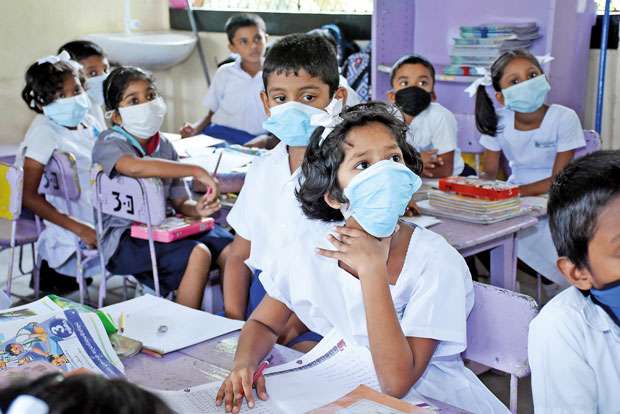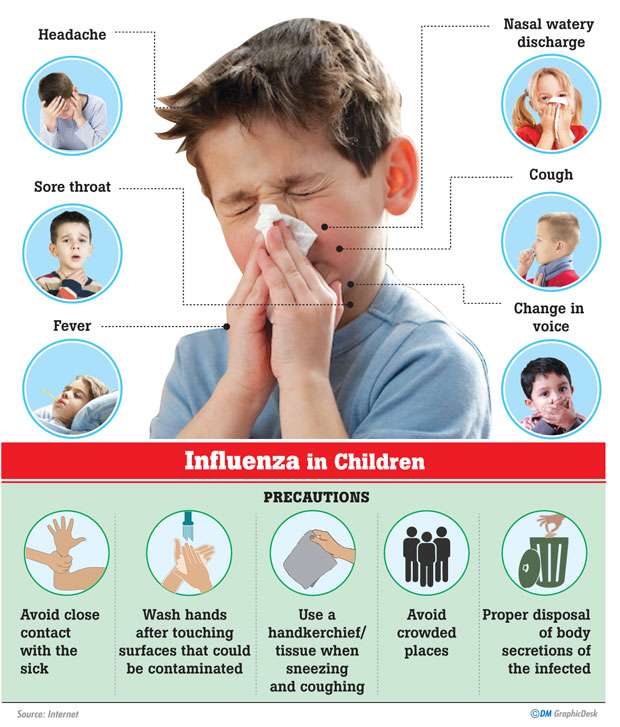Reply To:
Name - Reply Comment

 The influenza virus is back with a vengeance. This time it has been accompanied most probably by two other colleagues namely RSV and Adenovirus. Together these three infections can devastate every man, woman and child. The purpose of this article would be not to trouble the readers with details of these viruses, but to provide vital information on how to survive the flu. It is very important for parents to protect their children from this disease. In order to enlighten out readers on the topic of influenza we decided to speak to Consultant Paediatrician Dr. Dilusha Atukorale, MBBS (Colombo) MD (Paediatrics) and Diploma in Child Health.
The influenza virus is back with a vengeance. This time it has been accompanied most probably by two other colleagues namely RSV and Adenovirus. Together these three infections can devastate every man, woman and child. The purpose of this article would be not to trouble the readers with details of these viruses, but to provide vital information on how to survive the flu. It is very important for parents to protect their children from this disease. In order to enlighten out readers on the topic of influenza we decided to speak to Consultant Paediatrician Dr. Dilusha Atukorale, MBBS (Colombo) MD (Paediatrics) and Diploma in Child Health.
How to identify the flu?
To identify the influenza infection first we need to understand the human body parts that get affected. Influenza spreads through droplets of fluid. Inhalation of these can allow the virus to settle in our breathing system (respiratory system). Namely any area in our breathing system can get affected by influenza. The inner aspect of the nose, the air filled cavities inside our skull which we call sinuses (beneath your eyebrows, cheeks and behind your ears), the back of your throat, the voice box ( larynx) and the lungs are infected. This results in headaches, nasal watery discharge, sneezing, sore throat, change in voice and cough.Patients also suffer from an ill feeling. This is because the virus is capable of spreading through the blood stream to other organs. Children might become less active and talkative. They also prefer to rest and sleep when the infection is doing its harm to the body.Fever is also a common manifestation of influenza. Especially children might be vomiting if the infection is severe.
How to prevent children from acquiring influenza?
There are some simple steps that every parent should teach their kids in order to avoid this infection. Hand washing is one key habits that might prevent the spread of influenza.
Daily, children touch thousands of objects, be it tables, books, toys at a pre-school or taps at a public washroom. Influenza Virus may be harboured as a tiny liquid droplet in these objects. Fingers which are contaminated with these virus droplets might reach the eye, nostril or the mouth in the next moment.As mentioned earlier when the virus droplets reach the breathing system it tends to settle in and multiply. Even the outer layers of the eyeball can absorb the influenza virus. Wiping the eyes might cause the germs to invade. Using a handkerchief has its pros and cons. Handkerchiefs are useful to prevent the spread of virus especially when sneezing. But sometimes when these are used to wipe away dirt in the hands and later utilized to clean the mouth/ nose, it can allow the virus to invade. Avoid taking children to hospitals when visiting that relative or friend who is ill. Especially the out patient units might be crowded with patients who are already having influenza. It is also better to avoid crowded places like markets where unidentified patients might be transmitting this disease.
This is what you should do if your child has features of influenza
First parents need to differentiate between the common cold and influenza. A common cold has a slow onset and might present with a bit of runny nose, reduced activity of the child and sometimes cough. Usually a harmless cold does not cause high fever and muscle ache which in turn might be characteristic of influenza.There are some key features used to detect patients with complicated influenza. These are as follows.
1. The child does not interact with the parents and is unresponsive to stimulation
2. Very fast breathing which we call tachypnoea
3. Refusing drinks/ water
4. Bluish discoloration of skin with breathing difficulties
5. Highly irritated children
6. After initial symptoms settle a severe cough appears.

A paediatrician’s assessment is necessary when these sinister signs start showing. Having said that mild influenza can easily be managed at home. Allow your child to rest. Offer drinks/ warm water as much as possible. The body needs to fight back against the virus. Any healthy child is well equipped with a good immune system to perform this task. Keep other children away from the patient. Insist on using a handkerchief when sneezing and washing hands. Even the elderly and pregnant mum’s should be kept away from the patient.There are blood tests to determine the type of influenza your child has. The paediatrcian might arrange throat swabs. There are categories of tablets called anti-viral medication, available as treatment. These should be recommended by a paediatrician who will decide whether a blood test or tablet is really necessary. There are vaccines meant for the prevention of influenza as well.We prefer to manage ill children symptomatically as well. This means treating kids so that they are comfortable at home. For blocked noses nasal drops/ decongestants can be used. For body aches and fever paracetamol is useful. Stuffy noses or sinuses can be treated with steam inhalation as well. Steam is an excellent mucolytic. This means steam can cause thick secretions in the breathing system to loosen up. A large proportion of children will recover from this dreaded flu by correct and sensible treatment.